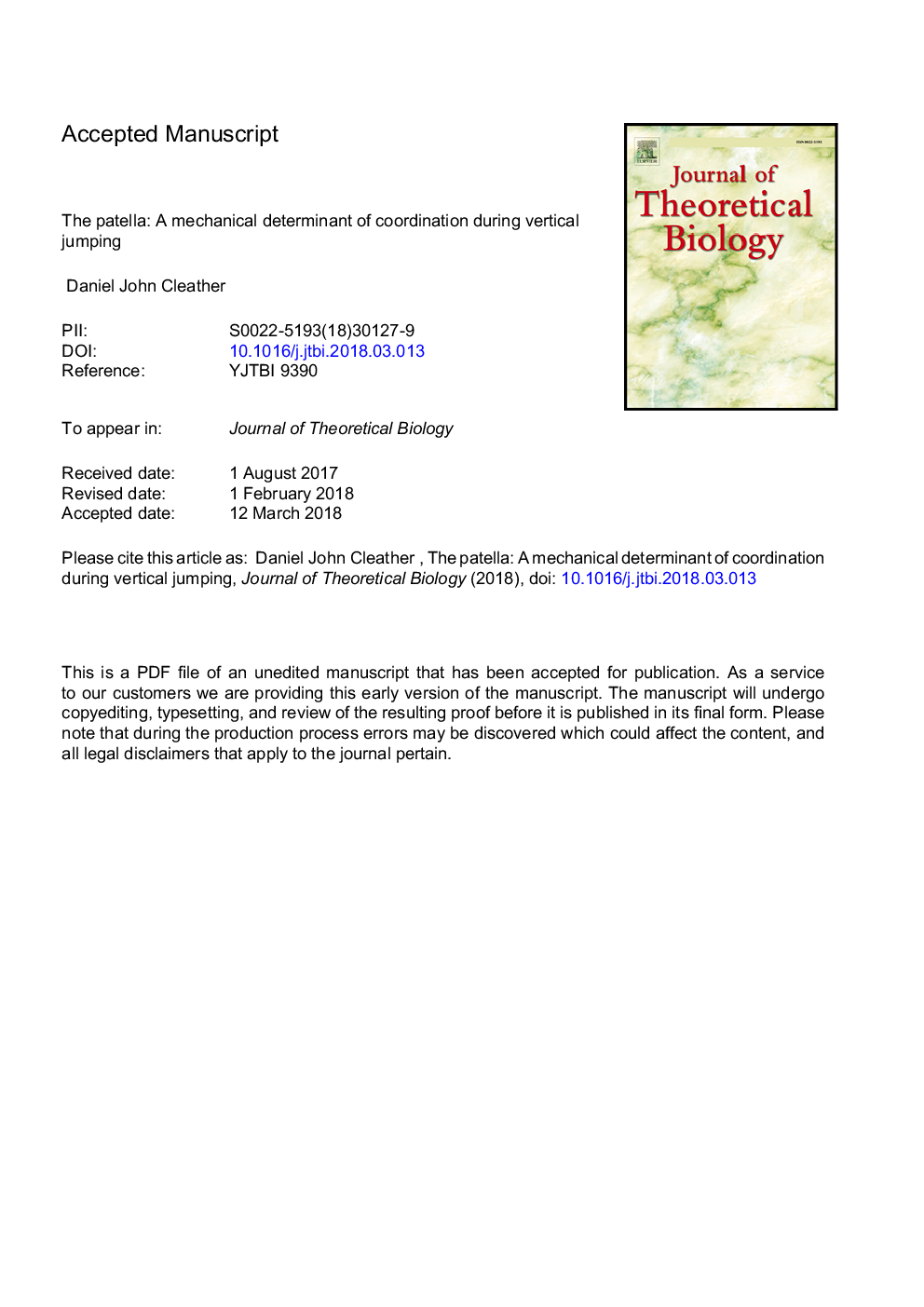| کد مقاله | کد نشریه | سال انتشار | مقاله انگلیسی | نسخه تمام متن |
|---|---|---|---|---|
| 8876741 | 1623764 | 2018 | 28 صفحه PDF | دانلود رایگان |
عنوان انگلیسی مقاله ISI
The patella: A mechanical determinant of coordination during vertical jumping
ترجمه فارسی عنوان
پاتلا: یک مشخصه مکانیکی برای هماهنگی در هنگام پریدن
دانلود مقاله + سفارش ترجمه
دانلود مقاله ISI انگلیسی
رایگان برای ایرانیان
کلمات کلیدی
کنترل موتور، تئوری سیستم های پویا، محدودیت های مکانیکی، مفصل پاتلوفومورال، مفصل تیبوفومورال، زانو، واست، رکتوس فمورس، پایه اندام پایینی جنبش،
موضوعات مرتبط
علوم زیستی و بیوفناوری
علوم کشاورزی و بیولوژیک
علوم کشاورزی و بیولوژیک (عمومی)
چکیده انگلیسی
The patella is traditionally understood to be a “joint spacer” that increases the moment arm of the patellar tendon. This characterisation is unsatisfactory as it fails to explain the more interesting characteristics of the patella: 1) that the changing pivot point of the patella causes the ratio of quadriceps to patellar tendon force to almost double as the knee flexes; 2) that the patellar tendon exerts an anteriorly directed force on the tibia when the knee is extended but this switches to a posterior draw as the knee flexes; and 3) that the presence of the patella allows the quadriceps to exert different moments on the femur and tibia. Here, I use a simple, model of the geometry of the knee to calculate the changes in the effective moment arms of the quadriceps on the femur and tibia as the knee extends during vertical jumping. These effective moment arms are then contrasted with the actual changes in moments seen during a vertical jump. This analysis demonstrates that the changing geometry of the knee alone can explain 93% (pâ¯<â¯0.05) of the variance in the characteristic femoral to tibial pattern of moment production during jumping - suggesting that the mechanics of the patella have a crucial influence on the coordination of jumping. These results lend support to the contention that mechanical considerations play a pivotal role in the control of movement by creating a stronger imperative towards a particular movement solution than might be suggested by the large degree of redundancy in the neuromuscular system. This idea is consistent with dynamic systems theories of motor control, i.e. the mechanical structure of the musculoskeletal system itself is important in the organisation of movement (so called mechanical intelligence).
ناشر
Database: Elsevier - ScienceDirect (ساینس دایرکت)
Journal: Journal of Theoretical Biology - Volume 446, 7 June 2018, Pages 205-211
Journal: Journal of Theoretical Biology - Volume 446, 7 June 2018, Pages 205-211
نویسندگان
Daniel John Cleather,
